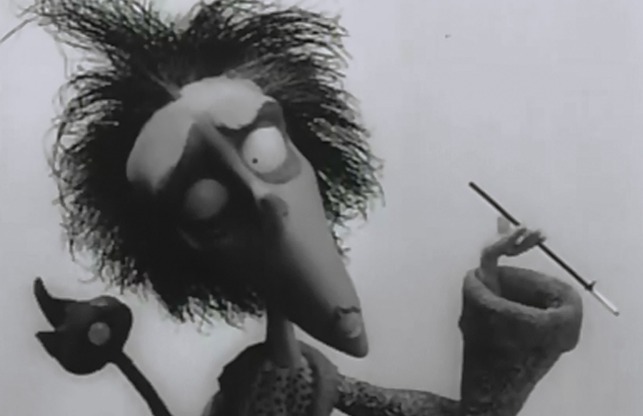(Image courtesy of Vincent by Tim Burton)
Introduction to Vincent by Tim Burton
The short film “Vincent”, by director Tim Burton, revolves around the life of Vincent Malloy, a 7-year-old boy who dreams to be like Vincent Price. Price is famous for his roles in various horror films through the 50s, 60s, and 70s. Burton is famous for using lighting and angles to provide a dark and or conflicted feeling in the character’s face. In this short film, Burton uses side lighting or lighting to highlight one side of Vincent’s face, to portray the conflict Vincent has with his identity. Side lighting is used to create a feeling of tension and confliction over the character.
The Art of Lighting and Angles

(Image courtesy of Vincent by Tim Burton)
As you can see, the shading Burton uses on the left side of Vincent’s face gives a conflicted mood to the image. Furthermore, it also highlights the two different sides of Vincent’s personality throughout the film, one which he believes he is Vincent Price, and the other where he’s Vincent Malloy. By using this technique, it allows the viewer to understand the two different sides of Vincent Malloy and the conflict he faces with his identity.

(Image courtesy of Vincent by Tim Burton)
In this image, Burton also uses a different lighting technique known as “low key lighting”. The image is flooded with shadows and darkness which creates a feeling of suspense or suspicion. The characters and images used in this scene, such as the creatures on the left and right, give this image an already eerie feeling, however, the low key lighting really defines the mood and gives the audience a feeling of suspense. This is exactly what Burton was trying to portray which is why he used this technique.
The Portrayal of Various Moods
Tim Burton is a master at using lighting and angles to portray a multitude of moods throughout his movies, and movie shorts, such as Vincent. I hope the breakdown of these images and scenes gives the audience a better understanding of the various moods and feelings that can be heightened by the artwork that is lighting and angles, as well as demonstrate the beauty of Burton’s work.